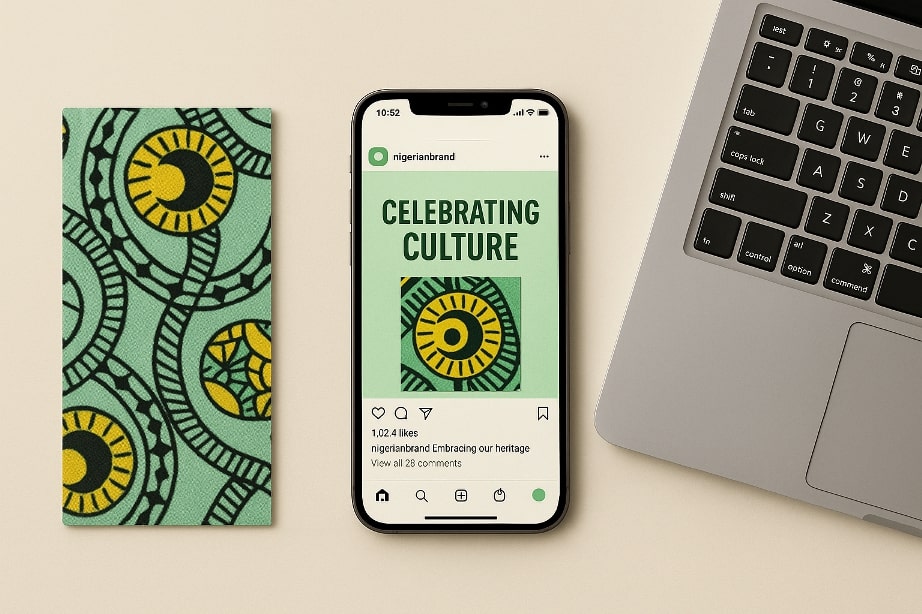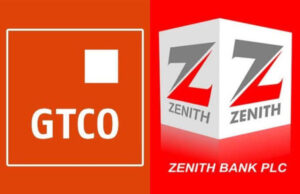In Nigeria’s rapidly evolving business landscape, where digital disruption, cultural dynamism, and consumer expectations are at an all-time high, brands can no longer afford to blend in. The difference between a forgettable name and a brand that commands loyalty often lies in how clearly it articulates its purpose and how consistently it shows up across every touchpoint. For businesses ready to lead, not follow, mastering brand positioning and identity is no longer optional; it’s essential.
From early-stage startups to legacy brands seeking renewal, the pressure to stand out in a crowded marketplace is real. Yet, many organizations still struggle with fragmented messaging, generic visuals, and disconnected experiences. To build trust, attract your ideal audience, and scale meaningfully, Nigerian businesses must embrace strategies that are both culturally rooted and strategically sound. This guide unpacks six powerful branding strategies tailored to help you build emotional equity, boost visibility, and accelerate growth, with insight from Slice Media’s proven approach to building iconic African brands.
1. Purpose‑Driven Brand Storytelling
One of the most powerful ways Nigerian businesses can differentiate themselves is through purpose-driven branding, a strategic move that transforms transactional relationships into emotional connections. While compelling design and media visibility help you stand out, it’s brand storytelling that ensures your message truly sticks. Telling your “why” isn’t about crafting a slogan; it’s about expressing a mission that mirrors your audience’s values, aspirations, and cultural identity.
Strong brand positioning starts with authenticity. Nigerian consumers, especially younger demographics, are increasingly choosing brands that reflect their worldview, whether that’s support for local artisans, environmental sustainability, or economic empowerment. A clear narrative that threads through your brand identity not only enhances recall but also builds trust and advocacy. Your story becomes a strategic asset, not just a marketing tool.
Slice Media’s award-winning work on GTCO’s “A Slice of Orange” campaign is a benchmark in brand storytelling. It didn’t just promote banking services, it painted a lifestyle rooted in heritage, innovation, and pan-African progress. This kind of culturally attuned narrative drives emotional loyalty that no discount or flashy logo can replicate.
To build a story that resonates, begin with stakeholder workshops that reveal the essence of your brand. Then, craft a Brand Story Framework that maps your purpose to your audience’s needs. Ensure that every brand expression, from your website to OOH campaigns, communicates that purpose with clarity and conviction.
Real-World Example: Seplat Energy – Rewriting the Nigerian Oil Narrative
A powerful example of purpose-driven brand storytelling in today’s Nigeria is Seplat Energy’s $1.28 billion acquisition of ExxonMobil’s onshore assets. This move wasn’t just a business transaction—it was a defining moment for Nigerian corporate independence. For decades, international oil companies dictated the pace and politics of the energy sector. Seplat flipped the script, stepping into a legacy space with a new narrative: Nigerians reclaiming control over their own resources.
For brands in Nigeria, this is a masterclass in how corporate actions, when tied to national identity and empowerment, become stories that inspire trust, loyalty, and pride. Seplat’s positioning isn’t just about oil—it’s about energy sovereignty, creating local jobs, and showing the next generation what African-led enterprise can look like on a global scale.
Purpose-driven storytelling in this context goes beyond marketing. If Seplat integrates its story across channels—from branded content to experiential community activations—it can build an emotional moat around its brand, one that resonates deeply with both investors and the public. This is how a brand becomes a movement.

2. Cultural Integration and Authenticity
Purpose-driven branding sets the emotional foundation, but to truly resonate in Nigeria’s diverse marketplace, cultural relevance is non-negotiable. A powerful brand identity must go beyond visuals or messaging; it must reflect an understanding of local values, traditions, and social cues. Nigerian consumers are not monolithic; regional beliefs, languages, and lifestyles deeply influence consumer behavior. Brands that ignore these nuances risk appearing tone-deaf or disconnected.
Effective brand positioning in Nigeria means crafting a localized brand strategy that aligns your purpose with real, everyday experiences. From Lagos to Kano, there’s a deep appreciation for community, shared celebration, and symbolic storytelling. Aligning campaigns with cultural touchpoints, like using native dialects or aligning launches with holidays such as Sallah, Independence Day, or Christmas, can dramatically increase relevance and recall.
Slice Media consistently emphasizes cultural fluency in branding. Their approach goes beyond aesthetics to embed meaning and authenticity in every brand narrative. Whether it’s partnering with local creatives or spotlighting indigenous values, their strategies ensure that your brand speaks the language, literally and figuratively, of its target market.
To get it right, brands should invest in market research that uncovers local insights, from slang to symbolism. Collaborating with cultural influencers and tastemakers can further elevate credibility, while activating campaigns around festivals or community moments can solidify emotional connection. This is how purpose-driven branding becomes deeply personal and undeniably Nigerian.
3. Culturally‑Infused Visual Identity Design
Building a culturally relevant brand strategy goes beyond messaging, it must also be seen and felt. This is where brand visual identity becomes a powerful driver of recognition and connection. In Nigeria’s visually vibrant market, a brand’s logo, color palette, and typography need to reflect more than global design trends, they must echo the textures, tones, and symbols familiar to local audiences.
Rooting your logo design and visual system in Nigerian culture, whether through traditional patterns, local motifs, or color symbolism, strengthens brand positioning by signaling authenticity. Green often represents prosperity, while earthy tones can reference regional heritage. These design choices do more than decorate, they tell a story that speaks directly to your market’s sense of identity and belonging.
Slice Media, Nigeria’s leading brand positioning agency, specializes in cultural branding that fuses aesthetic clarity with cultural depth. Their Brand Guidelines approach ensures consistency across all platforms, digital, out-of-home, and packaging, so your brand identity remains cohesive and memorable.
To bring this to life, brands must start with focused design research and audience testing. From there, creating a flexible, culturally-aware visual system ensures that your purpose-driven branding doesn’t just speak, it’s instantly recognized and remembered across every touchpoint.
4. Digital Presence
While a culturally-infused visual identity captures attention, it’s your digital presence that sustains engagement and expands reach. In a country where over 100 million people are online, platforms like TikTok, Instagram, Facebook, and X (formerly Twitter) have become vital arenas for brand positioning and storytelling. Nigerian consumers are not just browsing, they’re actively interacting, sharing, and shaping the narrative around the brands they support.
A strong digital campaign strategy reinforces brand identity in real time, keeping your message top-of-mind across multiple touchpoints. It’s not enough to be present, you need to be relevant. Shareable, Nigeria-centric content tailored to platform-specific behavior drives online engagement and deepens connection with tech-savvy audiences.
Slice Media understands the rhythm of digital Nigeria. From crafting bold social media marketing strategies to managing live interactions, their expertise helps brands stay culturally in tune and consistently visible. Their digital advertising campaigns are not only creative but data-driven, ensuring content reaches the right demographic at the right time.
To build a purpose-driven branding presence online, prioritize authentic storytelling, responsive community management, and precise ad targeting. Your digital footprint is an extension of your identity; make it distinctive, dynamic, and aligned with your core brand purpose.
5. Experiential Out‑of‑Home (OOH) & Ambient Activations
While digital engagement creates constant brand interaction, real-world experiences still hold unmatched power in shaping perception. Experiential branding, especially through OOH advertising in Nigeria, provides a tangible way to reinforce brand identity and evoke strong emotional responses. When executed thoughtfully, it bridges the gap between online presence and physical connection.
High-traffic areas in Lagos, Abuja, and Port Harcourt offer prime opportunities to create memorable moments through ambient marketing and pop-up activations. Whether it’s interactive billboards curated by Slice Media or surprise community engagements tied to local culture, these experiences leave lasting impressions and spark organic conversations across social media.
Slice Media’s deep understanding of experiential branding and audience psychology enables it to identify strategic activation points that align with both the environment and the brand’s values. Integrating tools like QR codes and augmented reality makes the experience immersive and measurable, linking offline curiosity with online conversion.
Strong brand positioning is no longer confined to messaging, it’s lived and felt. Through purpose-driven branding efforts like experiential OOH, Nigerian businesses can stand out in the crowded marketplace while remaining deeply connected to the communities they serve.

6. Influencer Ecosystem Development
While experiential marketing activates on-the-ground engagement, influencer partnerships amplify brand conversations across digital spaces with speed and credibility. In Nigeria’s social media-driven landscape, building a robust influencer ecosystem isn’t just a trend, it’s a strategic necessity for brands aiming to drive authentic advocacy and reinforce their brand identity.
A well-structured influencer strategy involves more than just a celebrity shoutout. It means curating relationships with creators whose values, voice, and audience naturally align with your brand positioning. From household names to niche micro-influencers with highly engaged followers, every tier offers unique value when approached with tailored, long-term collaboration strategies.
Purpose-driven branding resonates more deeply when shared through voices that communities trust. Nigerian influencers often double as cultural curators and trendsetters, making them ideal allies in storytelling that feels both aspirational and accessible. Slice Media helps brands identify the right match, build ongoing partnerships, and shape influencer-led content strategies that move the needle.
To ensure effectiveness, every partnership must be monitored and optimized for reach, engagement, and conversions. Whether your goal is visibility or credibility, nurturing an ecosystem of aligned influencers can dramatically elevate your brand’s relevance and emotional connection with consumers.
Frequently Asked Questions
#1. How long does it take to develop a new brand identity?
Typically, a full brand positioning and identity project, covering research, strategy, design, and rollout, takes 8–12 weeks, depending on scope and approvals.
#2. What is the cost of comprehensive brand positioning services?
Costs vary widely based on deliverables: strategic workshops, visual identity, packaging, and OOH can range from ₦3 million to ₦15 million. Slice Media customizes packages to fit the budgets of startups and enterprises alike.
#3. How can we measure the effectiveness of our brand identity?
Key metrics include brand recall surveys, social sentiment analysis, website traffic sources, and sales lift post‑launch. Align these KPIs with your overarching marketing objectives.
#4. Can small businesses in Nigeria afford these branding strategies?
Absolutely. Many strategies, like digital storytelling and thought leadership, have low entry costs. Slice Media offers scalable solutions, allowing small businesses to start with core elements and expand over time.
Conclusion
Strategic brand positioning and a compelling identity are essential investments for any Nigerian business aiming to build lasting connections and drive growth. By implementing these six purpose‑driven, culturally resonant, and data‑backed strategies, you’ll create an irresistible brand that stands out in today’s competitive marketplace.
Ready to elevate your brand? Contact Slice Media Limited today to craft a bespoke branding roadmap and start your journey toward becoming Nigeria’s next iconic brand.
Useful Links:
🛠 Recommended Tools for Nigerian Brands:
- Google Market Finder – https://marketfinder.thinkwithgoogle.com
Explore consumer trends and behavior insights by region to inform your localized brand strategy.
Meta Ads Library – https://www.facebook.com/ads/library
See real-time examples of ad creatives from Nigerian brands and global competitors to inspire your next campaign.




